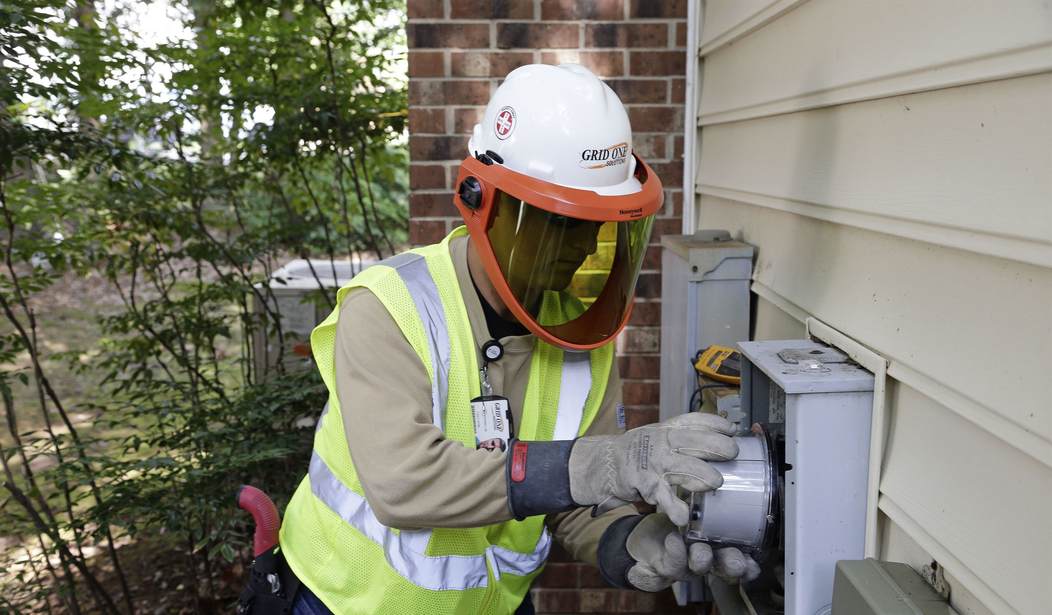Thousands of New Jersey residents experienced shock after opening electric bills this summer. Some households saw a three- or four-fold increase from last summer. Imagine going from $100 in June of 2023 to $450 a year later, or from $200 to $890.
Blaming these exorbitant rates on what might be deemed unusually hot weather is not going to cut it. A few extra degrees on the thermometer for several consecutive days will not quadruple an energy bill.
New Jersey has aggressively pursued an accelerated Renewable Portfolio Standard (RPS), increasing the amount of wind and solar the state is required to utilize and pushing up the dates for which deadlines are to be met. Incidentally, most states with a similarly bold RPS or other green energy initiatives have faced identical consequences.
California, notoriously known for its zealous climate goals, has inflicted at least 11 electricity price increases in just the last five years alone. San Diego area residents have seen an astounding 78 percent price surge on their bills in the last decade. Everyone living in the Golden State has even been asked to conserve energy and only consume it during certain hours.
New York openly admitted that their sweeping 2019 law mandating 70 percent renewable energy generation by 2030 would increase rates. Residents have and will continue to subsidize solar and wind projects, electric vehicle (EV) chargers, heat pumps, and other projects. Some experts anticipate upwards of 64 percent increases, or more.
Recommended
Connecticut residents have been required to pay a Combined Public Benefits fee which funds the cost of government mandates. The state public utilities authority even approved a price hike for utility companies to recoup tens of millions of dollars spent on EV-charging grid enhancements. These policies have prompted one company to publicly announce on its website, “It’s not us, it’s policymakers.” Customers must be irate.
Plenty of other states have fallen victim to the same trap. Governor Scott of Vermont at least had the good sense to veto a major electricity bill this past spring because he could not justify raising rates for his constituents, many of whom are struggling with increased costs everywhere else. He argued that a commitment to quadruple the quantity of renewables used to power the state would be “too costly” for Vermonters.
America is not alone. Several of our friends abroad have been suffering at the hands of bad energy policy decisions for years. After heavily reducing more reliable forms of energy and shifting to unpredictable wind and solar, Germany’s and Britain’s electricity prices have spiked.
Committing your state, region, or nation to a considerable amount of renewables increases electricity rates. The idea that solar and wind are cheaper than other forms is a ruse.
The intermittent nature of renewable energy requires backup capacity. The sun doesn’t always shine and the wind doesn't always blow; some areas are especially limited. Baseload power, or the minimum amount of electric power needed for the grid at any given time, must be supplied by a constant and reliable source.
Renewables also require a significant amount of additional transmission capacity. A Department of Energy study suggests that transmission capacity will need to be up to three times greater by 2035. The process to expand is not simple nor cheap. The lines will take up substantial physical space and often need to be dispersed in faraway locations.
Proponents of renewables often point to the Levelized Cost of Electricity (LCOE), which spreads the net value of the cost over the lifetime of the generating system, to validate wind and solar as the cheapest options. But the LCOE is flawed. It fails to account for the above-noted backup capacity and significant transmission required to integrate wind and solar into the grid; one expert claims that “in fact they become more expensive the higher their penetration in the energy system.” Trying to balance the supply and demand of intermittent renewable fuel sources on the electric grid is also rather complicated and incidentally, quite costly.
American consumers should not be at the mercy of derelict policies that not only reduce energy efficiency but cause the price of their electricity, a basic necessity, to skyrocket. Analysts warned about wind and solar’s high economic costs years ago.
Elected officials need to rethink how vigorously they are chasing renewables, and replace such pursuits with more practical approaches. It is possible to provide reliable (and environmentally-sound) energy while protecting ratepayers’ pocketbooks.
Kristen Walker is a policy analyst for the American Consumer Institute, a nonprofit education and research organization. For more information about the Institute, visit www.theamericanconsumer.org or follow us on Twitter @ConsumerPal.

























Join the conversation as a VIP Member